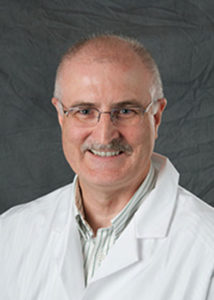APSF Stoelting Conference 2018
September 5, 2018 - September 6, 2018
2018 APSF Stoelting Conference Report
Recommendations Of The Four Work Groups At The 2018 APSF Stoelting Conference On Medication Safety
APSF Stoelting Conference 2018 Recap
2018 APSF Stoelting Conference
Perioperative Medication Safety: Advancing Best Practices
Co-hosts:



September 5-6, 2018
Royal Palms Resort and Spa
Phoenix, AZ
A special thank you to our Stoelting Conference Supporters:
For more information about the benefits of sponsoring the APSF Stoelting Conference, please contact Sara Moser at [email protected].
2018 APSF Stoelting Conference Program [PDF]
Objectives
The APSF held a consensus conference on medication safety in 2010. The link to the summary from the APSF Newsletter for the 2010 conference is below.
Regrettably, patients undergoing anesthesia continue to be harmed by medication errors, both intraoperatively and perioperatively. While it appears that there has been improvement in medication safety over the past two decades, the improvement has been tenuous, inconsistent, and insufficient.
The objectives of this meeting are to:
- Understand the current extent of knowledge and gaps in understanding related to medication safety and other factors that contribute to patient harm associated with the use of medications and errors in their administration.
- Review potential toxicities of commonly used anesthetic drugs, highlighting deficiencies/inconsistencies with currently approved FDA labeling.
- Learn what impact periodic drug shortages may have on perioperative patient safety.
- Discuss opportunities to reduce patient harm from perioperative medication use.
- Craft specific recommendations that APSF and others can use to influence changes that improve perioperative medication safety and encourage the development and FDA approval of new anesthetic drugs.
Program
Introduction

Mark Warner, MD
Welcome, why are we here, and what are our expected outcomes?
Mark Warner, MD
Professor of Anesthesiology, Department of Anesthesiology and Perioperative Medicine
Mayo Clinic
Rochester, MN

May Pian-Smith, MD
Why this conference’s topic really matters
May Pian-Smith, MD
Associate Professor of Anesthesia at Harvard Medical School
Director of Quality & Safety for the Dept of Anesthesia, Critical Care & Pain Medicine at Massachusetts General Hospital
Boston, MA
Session 1: How Safe Are our Most Commonly Used Anesthetics?

Dolores Njoku, MD
Sevoflurane and Desflurane: Hepatotoxicity
Dolores Njoku, MD
Associate Professor of Anesthesiology and Critical Care Medicine, Pathology and Pediatrics
Johns Hopkins University School of Medicine

Kirk Hogan, MD, JD
Nitrous Oxide: Vitamin B12 Destruction and Myeloneuropathy
Kirk Hogan, MD, JD
Department of Anesthesiology
University of Wisconsin School of Medicine and Public Health
Madison, WI

Max Baker, PhD
Sulfites: Here, There, and Everywhere
Max Baker, PhD
Department of Anesthesia
University of Iowa
Iowa City, IA

Dave Goodale
Propofol: Syndrome and Frenzy Examined
Dave Goodale, DDS, PhD
Executive Clinical Director
DBG Pharma, LLC
West Chester, PA

Jeff Feldman
Safe and Effective Use of CO2 Absorbents
Jeff Feldman, MD
Professor of Clinical Anesthesiology
Children’s Hospital of Philadelphia and Perelman School of Medicine
Philadelphia, PA

Raeford Brown
FDA and Generic Drug Labeling Updates
Raeford Brown, MD
Professor of Anesthesiology and Pediatrics
University of Kentucky Medical Center/ The Kentucky Children’s Hospital
Lexington, KY
Session 2: Drug Shortages Affecting Patient Safety

Erin Fox
Drug Shortages
Erin Fox, PharmD
University of Utah Health
Senior Director, Drug Information and Support Services
Salt Lake City, UT

Tricia Meyer
Patient Safety Implications of Drug Shortages
Tricia Meyer, PharmD, MS, FASHP, FTSHP
Regional Director of Pharmacy
Baylor Scott & White Medical Center-Temple
Associate Professor Anesthesiology
Texas A&M College of Medicine
Temple, Texas

Dave Goodale
New Anesthetics Ready for Rapid Development
Dave Goodale, DDS
Executive Clinical Director
DBG Pharma, LLC
West Chester, PA
Session 3: Reducing Medication and Administration Errors
A number of influential organizations have addressed important issues of medication administration and errors. One of these issues is the use of colored labels to aid in drug-type recognition during anesthesia. The following links and description will provide you with useful information regarding coloring of drug labels.
From the American Society of Anesthesiologists:
http://www.asahq.org/~/media/sites/asahq/files/public/resources/standards-guidelines/statement-on-labeling-of-pharmaceuticals-for-use-in-anesthesiology.pdf
From the Institute for Safe Medication Practices:
https://www.ismp.org/resources/color-coded-syringes-anesthesia-drugs-use-care
From the American Society of Health-System Pharmacists (ASHP): ASHP is opposed to the use of colors for medications; however we are revising a policy, 9608: The use of color to identify drug products. The revision of the policy will be to support the use of colors indicated for anesthesia, and anesthesia only, given this is an accepted global standard at this point.

Kevin Kavanagh
Preventable Hospital Mortality
Kevin Kavanagh, MD, MS
Health Watch USA
Lexington, KY

Joyce Wahr
Medication Safety and Networked Surveillance in Anesthesia
Joyce A. Wahr, MD, FAHA
Vice-Chair for Quality and Safety, Department of Anesthesiology
University of Minnesota
Minneapolis, MN

Julie Boytim
Factors Contributing to Medication Errors
Julie Boytim
Chief CRNA
American Anesthesiology
College Station, TX

Elizabeth Rebello
Drug Concentration Standardization
Elizabeth Rebello, MD, FASA
Associate Professor
Department of Anesthesiology and Perioperative Medicine
The University of Texas MD Anderson Cancer Center
Houston, TX

Deb Pasko
The ASHP Standardize-4-Safety Project
Deb Pasko, PharmD, MHA
Director, Medication Safety & Quality
Center on Medication Safety and Quality
ASHP
Bethesda, MD

Ron Litman
ISMP Perspectives on Standardization of Labels and Vial Colors
Ronald S. Litman, DO, ML
Department of Anesthesiology and Critical Care, The Children’s Hospital of Philadelphia
Professor of Anesthesiology and Pediatrics, Perelman School of Medicine at the University of Pennsylvania
Philadelphia, PA

David Jamison
Intravenous Medication Administration: Potential for Harm
David T. Jamison
ECRI Institute, Executive Director, Health Devices
Plymouth Meeting, PA

Tim Vanderveen
Intravenous Medication Administration: Smart Pumps and Other Approaches to Reduce the Potential for Harm
Tim Vanderveen, PharmD, MS
Session 4: Opioid-Induced Ventilatory Impairment

Frank Overdyk
Perioperative Opioid-Induced Respiratory Depression Update
Frank Overdyk, MSEE, MD
Professor of Anesthesiology
Charleston, SC

John Murkin
Oxygen Monitoring: Brain versus Finger-Tip
John M Murkin MD, FRCPC, FCAI(hon)
Professor of Anesthesiology
University Hospital, LHSC
Schulich School of Medicine
University of Western Ontario
London, ON
Session 5: Implementation of a Comprehensive Perioperative Drug Safety Program

David Bates
Evaluation and Actions: One Institution’s Story
David W. Bates, MD, MSc
Professor of Medicine at Harvard Medical School
Professor of Health Policy and Management at the Harvard School of Public Health
Boston, MA

Eliot Grigg
A Comprehensive Approach: Seattle Children’s Hospital
Eliot Grigg, MD
Assistant Professor, Department of Anesthesiology and Pain Medicine
University of Washington / Seattle Children’s Hospital
Seattle, WA
Session 6: Specific Recommendations and Next Steps
Breakout groups

Dave Goodale

Rich Prielipp
Drug Safety Group: Approaches to addressing concerns about current anesthetics? Should we advocate for the introduction of new anesthetics? How would we do it?
Dave Goodale and Rich Prielipp

Steve Greenberg

Jerry Cohen
Drug Shortage Group: Can we promote or influence actions that may decrease drug shortages or uneven distribution of perioperative medications? How would we do it?
Steve Greenberg and Jerry Cohen

Meghan Lane-Fall

Lynn Reede
Reducing Medication and Administration Errors: What role should we play? Advocacy? Support of clinical research in specific areas? Collaborating with industry to reduce the risk of errors?
Meghan Lane-Fall and Lynn Reede

Jeff Feldman

Tim Vanderveen
Standardization and Innovation: Should APSF advocate for medication standardization regarding drug concentrations, labelling, and administration approaches? If yes, how should we do it?
Jeff Feldman, Tim Vanderveen, and Patty Reilly

Mark Warner

Dave Goodale

Tim Vanderveen
Finalizing recommendations and next steps
Mark Warner, Dave Goodale, and Tim Vanderveen




